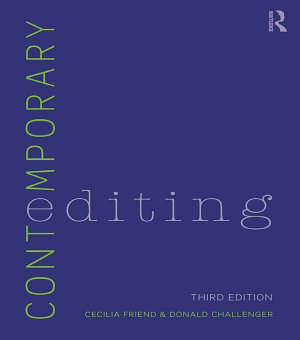Contemporary Editing: Edition 3
អំពីសៀវភៅអេឡិចត្រូនិកនេះ
Features of the Third Edition:
-Editing 2.0 boxes discuss the impact of digital technology and social media on editing.
-Coverage of grammar problems and a new chapter on working with numbers provide students with a strong grasp of math and grammar, which are the underpinnings for all writing and editing.
-An emphasis on editing for brevity prepares students to write and edit clearly and briefly, for print and for the web.
-A chapter on the art of headline writing guides students through one of the editor’s most important tasks, and introduces the task of search engine optimization.
-Examples of ethics and legal situations show students how issues arise in even the most basic stories, and how to address them.
-Online exercises present additional practice for students, without needing to purchase a workbook.
ការដាក់ផ្កាយ និងមតិវាយតម្លៃ
អំពីអ្នកនិពន្ធ
Cecilia Friend is Professor of Journalism at Utica College. She has been teaching journalism for more than 25 years. Before that she spent 10 years as a reporter and editor. Since, she has continued to serve as an editor in various capacities and a writing and design coach. She is the co-author of "Online Journalism Ethics: Traditions and Transitions," published in 2007.
Donald Challenger is a writer, editor and teacher who most recently served as college editor at Hamilton College. He has worked for more than 30 years in newspaper and magazine journalism and has taught journalism and writing as an adjunct professor in several programs, including Syracuse University's S.I. Newhouse School of Public Communications.





